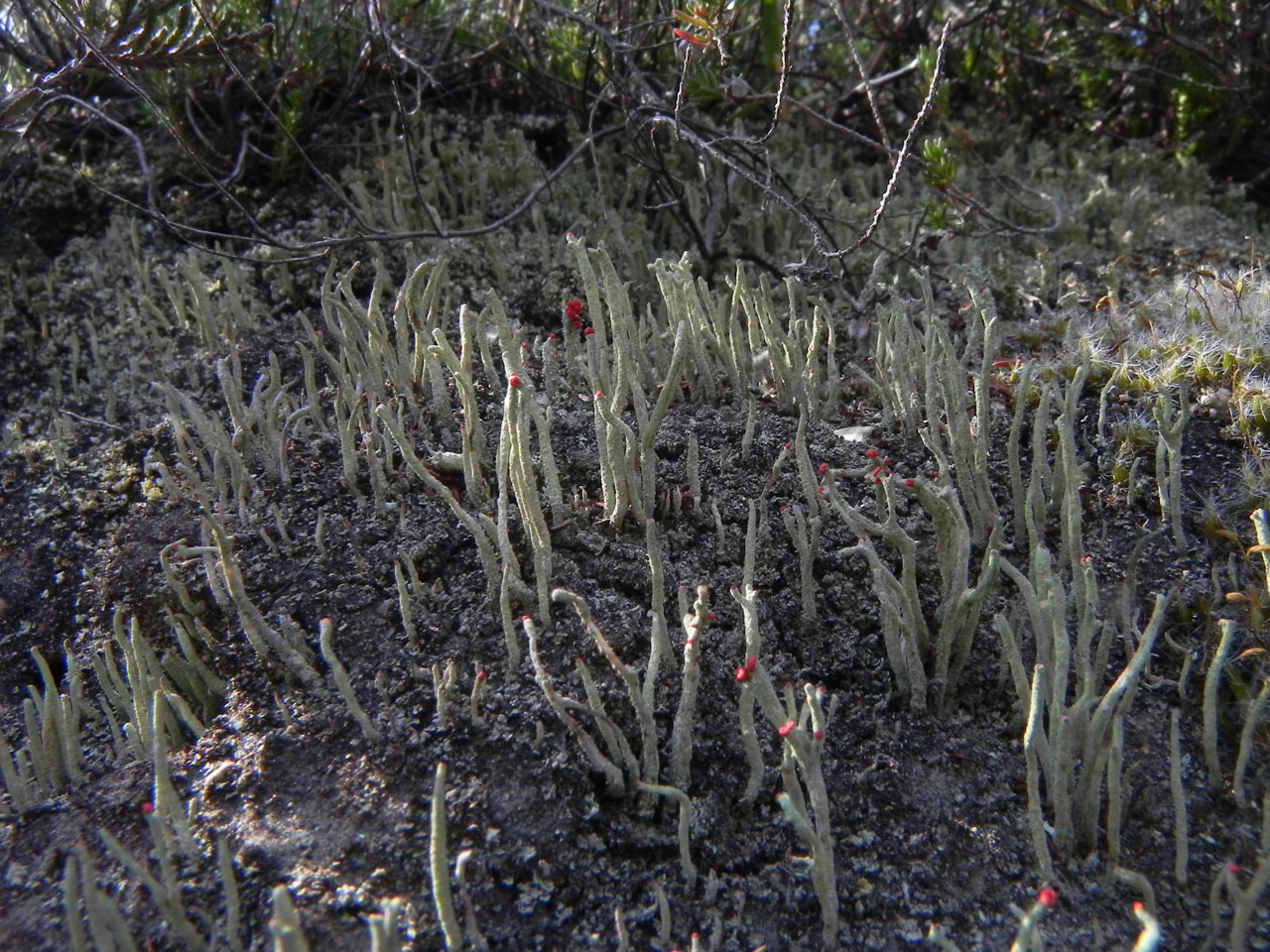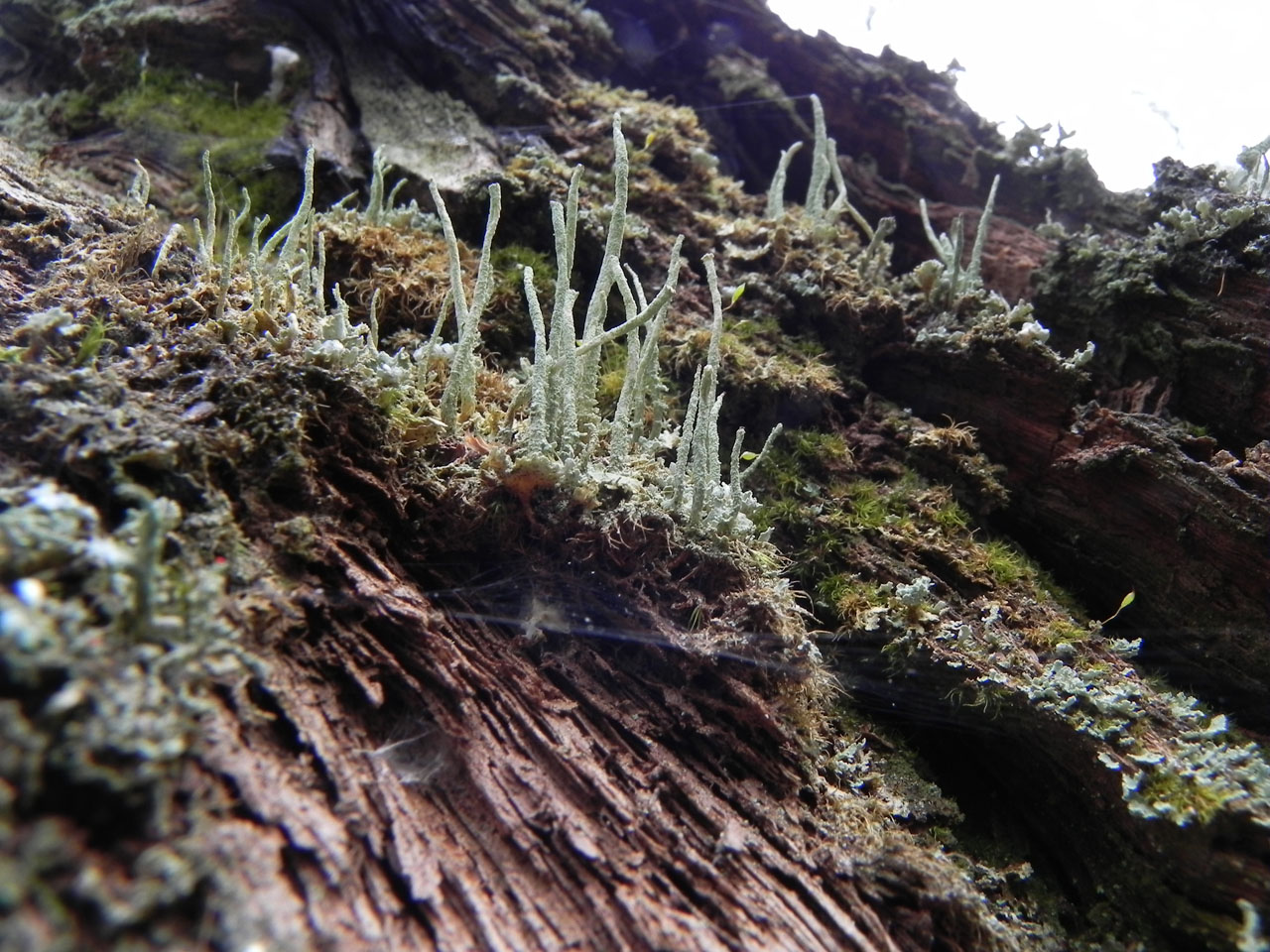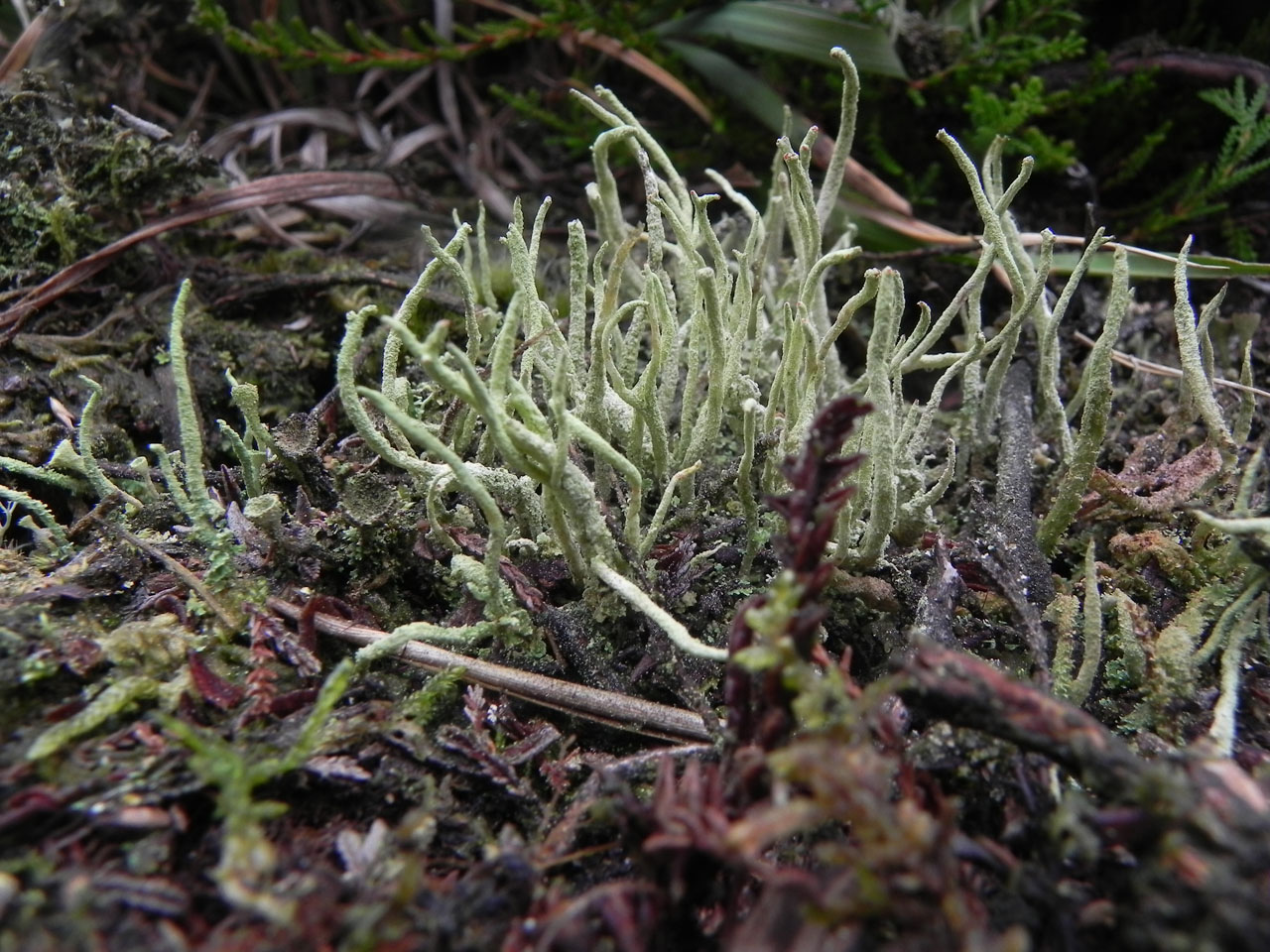A small to medium sized Cladonia characterised by lacking cups, even when mature, with a usually unbranched and slim podetia, with farinose soredia and red apothecia and pycnidia. A K+ yellow spot test is characteristic, but a morph with a K– reaction exists. Found in well-lit strongly acid humus and lignum in acid open woodlands and heathlands but much over recorded in the past for stunted Cladonia polydactyla lacking cups.
Podetia to 1.5 (–3) cm tall, often less, white to pale grey, pointed at the apices, without cups, usually unbranched or rarely sparingly
branched near the apices, usually ± entirely farinose, at times patchily decorticate, rarely bearing squamules, particularly near the base. Apothecia and pycnidia red, at tips of podetia, single or clustered, rather frequent. Thallus C–, K+ yellow-orange, KC–, Pd+ yellow, UV– (thamnolic, barbatic and ± didymic acids) or C– , K–, KC+ pale yellow or KC–, Pd–, UV+ pale blue or UV– (barbatic and ± didymic acids). The latter were named as C. bacillaris (Ach.) Genth, but are best considered as chemotypes of C. macilenta. Adapted from Pino-Bodas et al (2021).
Cladonia macilenta may be difficult to separate from juvenile, shaded or pollution-stressed morphs of C. polydactyla which may develop distinctive cups only at a late stage of development. C. macilenta can be separated by the farinose soredia on the podetia as opposed to the coarsely granular soredia of C. polydactyla. The blue-grey colours, often characteristic of Cladonia polydactyla, are not seen in C. macilenta which is typically white to pale grey.
When sterile Cladonia macilenta may superficially resemble C. glauca which, however, contains squamatic acid (UV+ vivid white) and often has a single, obscure longitudinal fissure ± midway down the podetia.
Mainly on well-lit strongly acid humus and lignum in acid open woodlands and heathlands; localized and infrequent.

Localised and infrequent, but much over-recorded for morphs of Cladonia polydactyla without cups. Probably throughout Britain and Ireland, but much rarer in lowland areas than suggested by the map.
Widespread but potential threatened in parts of the lowlands from the loss of high quality heathland habitats
Pino-Bodas, R., Sanderson, N., Cannon, P., Aptroot, A., Coppins, B., Orange, A. & Simkin, J. (2021). Lecanorales: Cladoniaceae, including the genera Cladonia, Pilophorus and Pycnothelia. Revisions of British and Irish Lichens 19: 1-45. Link
Text by Neil A Sanderson, based on Pino-Bodas et al (2021)





